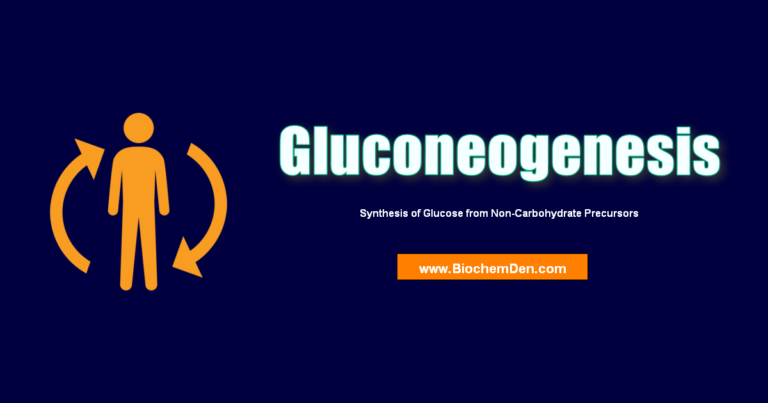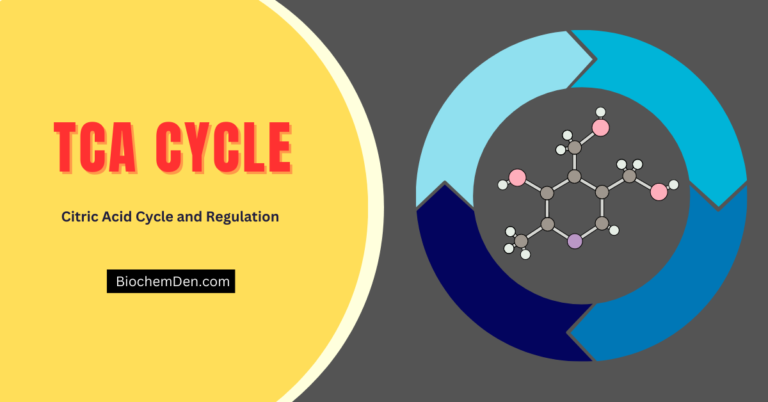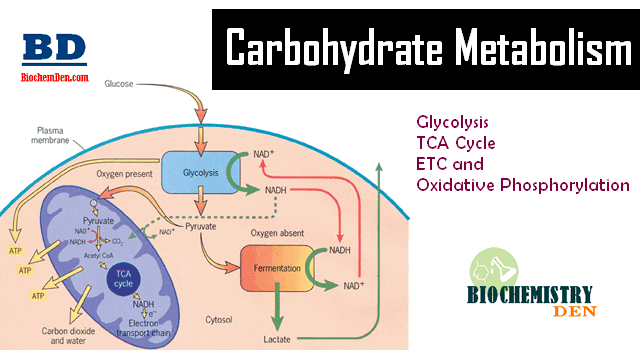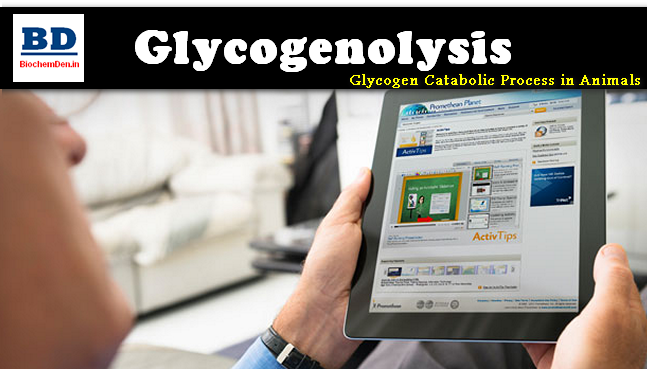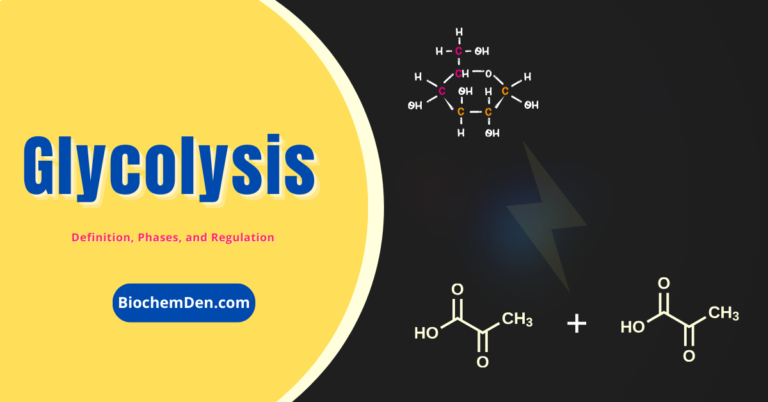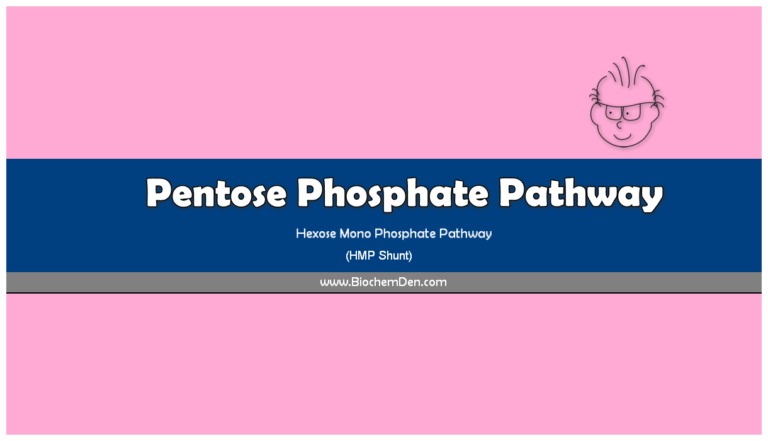Do you know the Fates of Pyruvate after Glycolysis Cycle? In this notes, you will learn the basics and mechanism of Pyruvate Dehydrogenase Complex. Glycolysis is taking place in Cytoplasm. So Pyruvate is generated in Cytoplasm. This is to be transported into mitochondria by a Pyruvate transporter. It is a simport, where the hydrogen ion is a transporter.
What is the fate of pyruvate? Here two different enzymes are involved based on the condition. They are Pyruvate dehydrogenase and Lactate dehydrogenase enzymes. There are 2 different conditions are monitored by the Pyruvate fate.

- Anaerobic Condition (Absence of Oxygen) → It converts Glucose into Lactate
- Aerobic Condition (Presence of Oxygen) → It converts Glucose into Acetyl~CoA
Anaerobic Condition
In Myocytes in muscles, the Pyruvate is converted into Lactate. In the presence of the enzyme “Lactate dehydrogenase (LDH)”. In the reaction, NADH+H+ is consumed.
Lactate Dehydrogenase (LDH) is a classical example for Isoenzyme (or) Isozyme. The molecular weight is 1, 40,000.
Pyruvate → Lactate + NAD+
Aerobic Condition
In the presence of oxygen, the Pyruvate is converted into Acetyl~coA molecule. This reaction is catalyzed by the “Pyruvate dehydrogenase” complex (PDH complex).
Pyruvate + CoenzymeA → Acetyl~coA + NADH + H+ + CO2
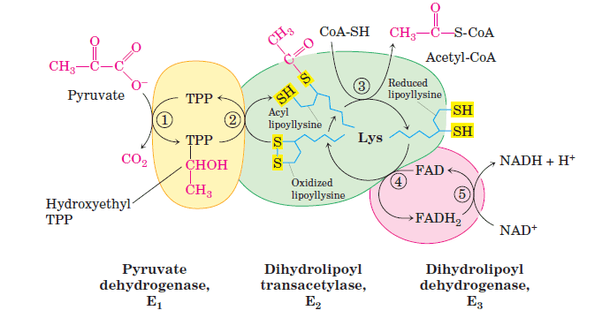
About Pyruvate Dehydrogenase Enzyme
- PDH is a multienzyme complex
- The molecular weight of the PDH complex in Escherichia coli is 48,00,000.
- PDH complex is located in the Matrix Space of Mitochondria of the erythrocytes in the cytoplasm of the prokaryotes.
- The Enzyme contains 3 enzymatic sub-units and 5 co-enzymes.
Enzymatic subunits of PDH Complex:
- Pyruvate dehydrogenase (or) Pyruvate decarboxylase [E1]
- Dihydrolipoyl transacetylase [E2]
- Dihydrolipoyl dehydrogenase [E3]
CoEnzymes of PDH complex:
- Thiamine pyrophosphate (TPP)
- Lipoic acid
- Flavin Adenine Dinucleotide (FAD)
- CoEnzyme~A
- Nicotinamide Adenine Dinucleotide (NAD+)
Mechanism of Pyruvate Dehydrogenase Complex
There are 5 successive stages in the conversion of Pyruvate into Acetyl~coA. These are as follows.
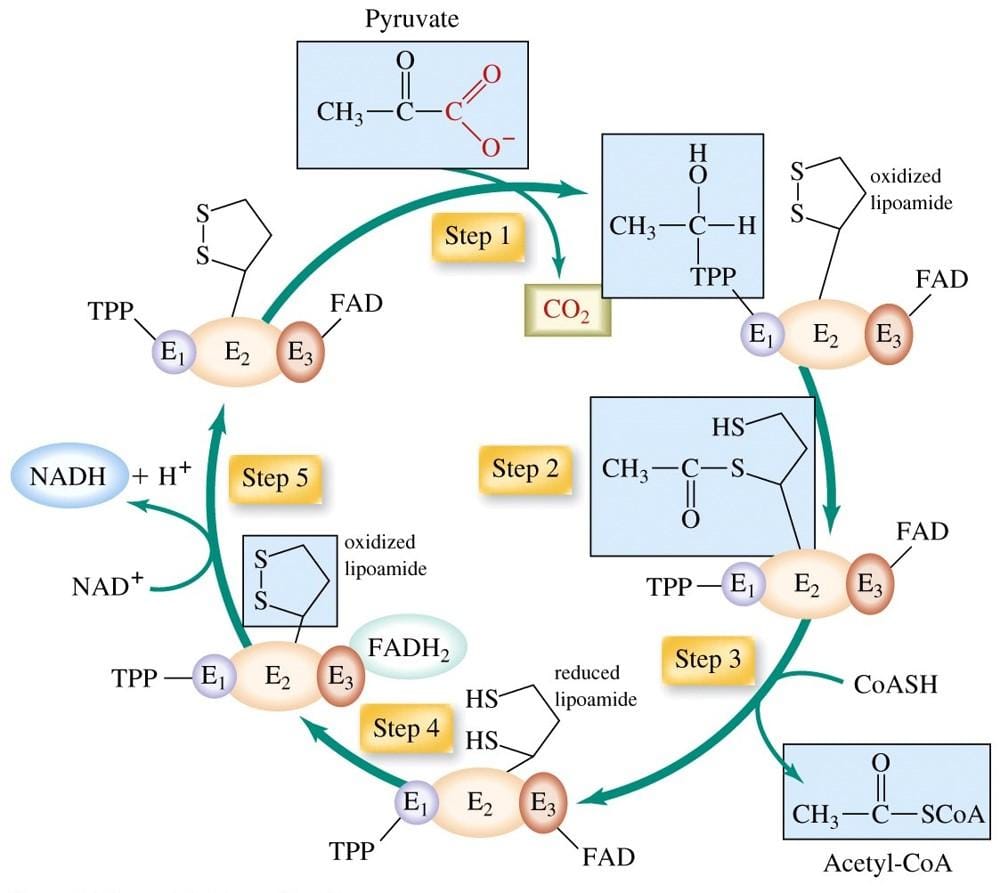
Step 1: Decarboxylation
Pyruvate loses its carboxyl group as it reacts with the bound TPP of Pyruvate of the E1 subunit to form the hydroxyl Methyl derivative of the Thiazole ring of TPP.
Step 2: Oxidation
The hydrogen atom and acetyl group are transferred to the oxidized form of the lipoyl group of Coenzyme E2 to form 6-acetyl thioester of the reduced lipoyl groups.
Step 3: Acylation
A molecular CoEnzymeA reacts with the acetyl derivative of E2 to produce acetyl~coA and fully reduces the form of lipoyl group. the Acetyl~coA is involved in the TCA cycle.
Step 4: Reduction
The fully reduced form of E2 is acted upon by E3 which promotes the transfer of hydrogen atom from reduced lipoyl groups to the FAD prosthetic group of E3.
Step 5: Dehydrogenation
In this last stage, the reduced group of E3 transfers hydrogen to NAD+ forming NADH.

